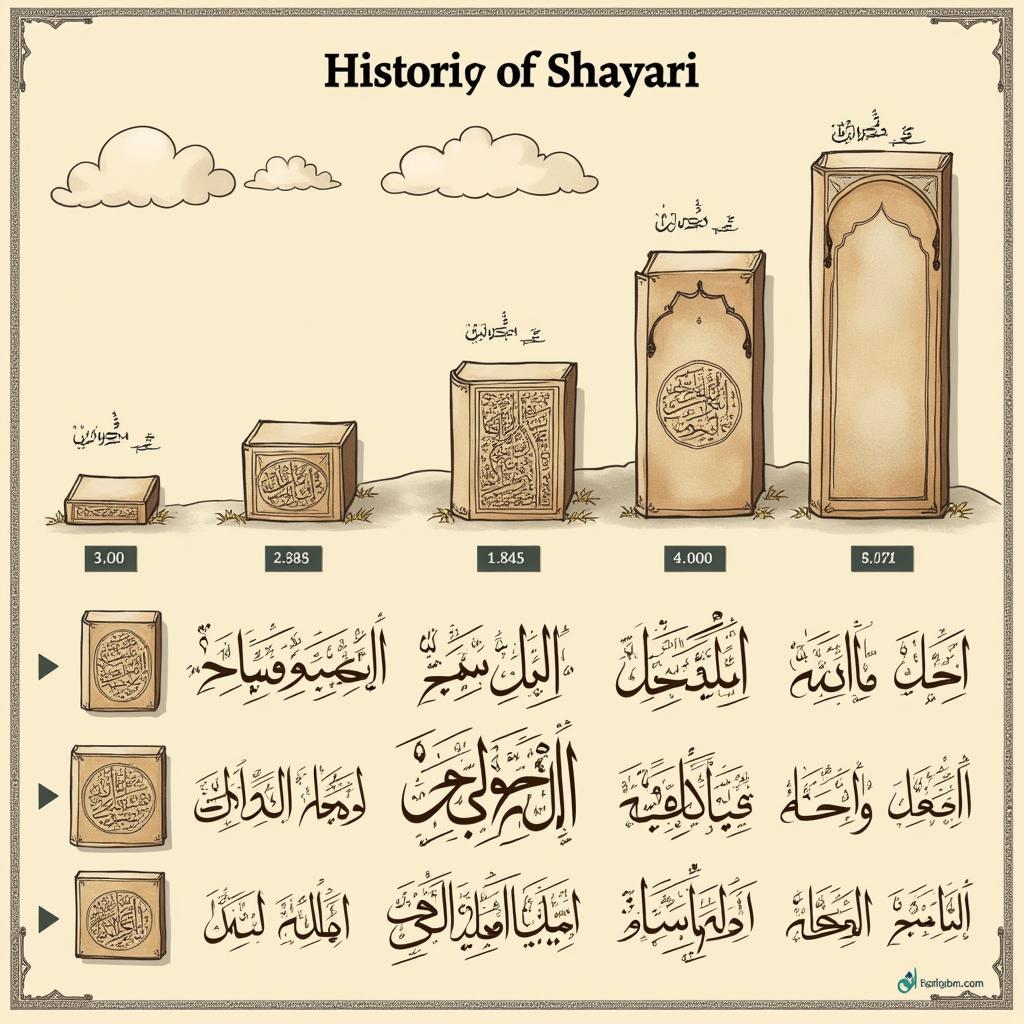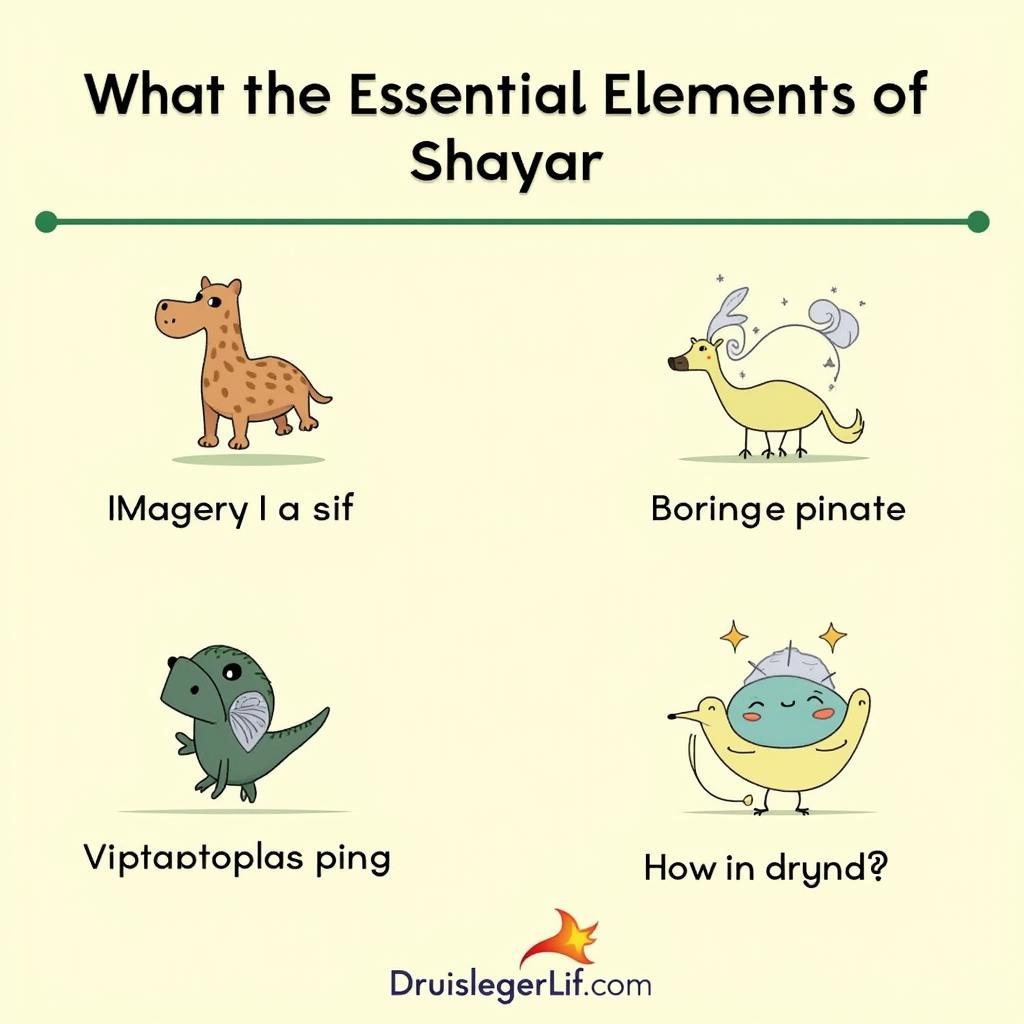Shayari Style is more than just rhyming words; it’s an art form, a way to express profound emotions and complex thoughts with poetic elegance. Whether it’s love, heartbreak, longing, or philosophical musings, shayari captures the essence of human experience in a way that resonates deeply with its audience. This exploration delves into the nuances of shayari style, examining its history, various forms, and the elements that contribute to its unique beauty. Let’s embark on a journey to understand what makes shayari so captivating.
The Evolution of Shayari Style
 Evolution of Shayari Style
Evolution of Shayari Style
Shayari, originating in Persia, evolved over centuries, eventually finding a fertile ground in the Indian subcontinent. Initially, it was primarily an oral tradition, passed down through generations. The influence of Persian language and culture is evident in the early forms of shayari, particularly in the use of Urdu, a language heavily influenced by Persian. Over time, shayari style adapted and incorporated local dialects and cultural nuances, giving rise to distinct regional variations. It embraced diverse themes, reflecting the changing social and political landscapes. From the courts of kings to the streets of bustling cities, shayari became a powerful medium for expressing both personal and collective sentiments.
Different Forms of Shayari Style
Shayari style encompasses a variety of forms, each with its unique structure and characteristics. Some of the most prominent forms include:
- Ghazal: Perhaps the most popular form, ghazals are composed of couplets (sher), each expressing a complete thought. They often explore themes of love, loss, and spirituality.
- Nazm: Unlike ghazals, nazms have a continuous theme running throughout the poem. They allow for greater narrative development and exploration of complex ideas.
- Rubai: A quatrain form, rubais are known for their concise and impactful expressions. They often focus on philosophical reflections and observations about life.
- Qasida: A formal ode, qasidas are typically written in praise of a person, event, or object. They are known for their elaborate language and intricate structure.
Exploring these different forms helps us appreciate the versatility and richness of shayari style. Each form offers a unique canvas for poets to express their creativity and capture the essence of human emotions. For those interested in exploring more contemporary forms, check out our instagram attitude shayari english collection.
Key Elements of Effective Shayari Style
 Key Elements of Effective Shayari
Key Elements of Effective Shayari
What truly sets shayari apart is the skillful use of certain literary devices and techniques. These elements contribute to the depth, beauty, and emotional impact of shayari style.
- Imagery and Metaphor: Shayari relies heavily on vivid imagery and metaphors to paint a picture in the reader’s mind and evoke strong emotions. The use of figurative language adds layers of meaning and allows for deeper interpretation.
- Rhyme and Rhythm (Radeef and Qaafiya): The musicality of shayari is enhanced by the use of rhyme and rhythm. Radeef refers to the repeating word or phrase at the end of each couplet, while Qaafiya refers to the rhyming words preceding the Radeef. These elements create a pleasing auditory experience and contribute to the poem’s memorability.
- Wordplay and Puns: Shayari often employs clever wordplay and puns to add a touch of wit and humor, even within serious themes. This adds another layer of complexity and enjoyment to the art form.
- Emotional Depth and Intensity: At its core, shayari is about expressing profound emotions. Whether it’s the joy of love, the pain of separation, or the contemplation of life’s mysteries, shayari delves into the depths of human experience. Check out our collection of shayari 2 line attitude love for some poignant examples.
Understanding these elements is crucial to appreciating the artistry and power of shayari. They are the building blocks that allow poets to create verses that resonate with readers on an emotional and intellectual level.
Shayari in the Digital Age
In the digital age, shayari has found new avenues for expression and reach. Social media platforms, websites, and mobile apps have become popular platforms for sharing and consuming shayari. This has led to a resurgence of interest in this ancient art form, connecting it with a new generation of audiences. You can find many expressive examples on platforms like fb shayari attitude boy hindi. This digital revival has also facilitated the exploration of new themes and styles, while retaining the core elements that make shayari so captivating. Explore our fashion shayari and funky life shayari for modern interpretations of this timeless art.
Conclusion
Shayari style, with its rich history, diverse forms, and powerful use of language, continues to captivate audiences across generations. Whether you are a seasoned connoisseur of poetry or a newcomer to the world of shayari, exploring its nuances offers a rewarding journey into the depths of human emotions and the beauty of artistic expression. Shayari is a testament to the enduring power of words to connect, inspire, and transform.
FAQ
- What is the difference between Ghazal and Nazm?
- What are some common themes explored in Shayari?
- How has technology impacted the spread of Shayari?
- What are some tips for writing effective Shayari?
- Who are some famous Shayari poets?
- What are the key elements that contribute to the beauty of shayari style?
- How can I learn more about the history and different forms of shayari?
Need More Help with Shayari Style?
Contact@ViperCircle.com
G-5, लोअर परेल, सेनापति बापट मार्ग, मुंबई, महाराष्ट्र – 400013, भारत।
We have a 24/7 customer support team.